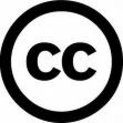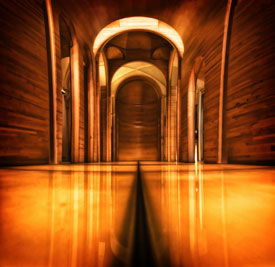Another Wednesday, another post on ethical blogging! For those who are just coming to Future Conscience, I have recently started a series of posts on what we feel are some good blogging practices. Each week we will be looking at a different topic in order to try and build up a body of information for bloggers new and old alike that helps guide you towards a more ethical mindset when it comes to your blog.
Today I’m going to take a look at a very important aspect of blog posts: images. The ethical use of images is something that the internet in general plays quite fast and loose with. At the heart of this issue are reproduction rights, or in simple terms which images you are and aren’t allowed to use on your website.
It’s an easy aspect of blogging to become quite lax in, taking images from anywhere (usually through the use of a quick Google Images search) without really considering whether or not you have the right to use them. Afterall, chances are nobody is going to notice right?
Actually, wrong. Whether or not the original owners of the images will ever become aware of you using their work, you should still try whenever possible to ensure that you act ethically. So here are a few simple ways, along with some great resources, to get you well along the path towards using images on your blog or website.
The right to reproduce
First of all, let me just highlight the fact that in order to ethically use an image on your website the original creator must have – in one way or another – given you express permission to do so. Now, this can come from you emailing them and asking directly; or, more commonly, from the creator granting certain global rights of use provided their conditions are met.
The easiest category to use freely are images that are in the public domain. There are some restrictions however to images that you may feel, and rightly so, are in the public domain. First of all, there is the grey area when it comes to images which have been scanned or otherwise digitised from a public domain source. Sometimes, the original physical image might be in the public domain but the digital version of it will still have some restrictions attached to it. This is accepted because of the work (however minimal it may seem) that it took to digitise the image. So it’s worth keeping in mind that there are sometimes differences between physical public domain images and their digital counterparts.
The second, and possibly more common (at least for recent, more modern images such as many photographs) license are those which grant the user reproduction rights as long as there is some citation of the source that they came from. Many of the images used on Future Conscience come from such sources, and it is important to ensure that you credit the original creators along with the site that you found them from (such as Flickr for example). It is also a good practice, although not technically a necessity, to also provide a link to the original page that you found the image on.
Finally, there are those images that are usually protected but you can purchase the rights to use through a small (or sometimes even quite exorbitant) price. You can either pay for each individual image, or alternatively pay for a usually expensive subscription cost that lets you use many images from the site.
This is the best way to find the highest quality images, and you will be able to find pretty much any image you can imagine through this route. I will say though, that these resources tend to be more targeted towards commercial use of images for things such as magazines or posters – and as such the images are often of far higher resolution and quality then you will ever need for web-based usage.
All of these different sources, when used and cited appropriately, are great examples of the ethical use of images for your blog. Below, I’m going to list a few great places where you can find images from each category. Always remember however, the golden rule of obtaining images from internet searches and websites: if you can’t find a specific reference to how the image can be used you should always presume that you have no right to use it!
Public Domain
What constitutes public domain can be different from country to country. The general consensus is that after a specific period of time (usually 75 years or so after the death of the creator), the work becomes part of the public domain and usable by anybody who wishes to. In addition to this, many creators (particularly photographers) often designate their works to be public domain because they are happy for anybody to use it.
For the most part, public domain images do not require any form of attribution. However, if you can find who originally created it then it is good practice to attribute it anyway. Two great resources to find public domain images are the following:
This is the image resource connected to Wikipedia, and it contains many different types of licenses such as Creative Commons as well. It is a fantastic resource through which to find public domain images, and you can generally be assured that any image that is approved for use on Wikipedia will allow you to reproduce it in some manner. It’s also a great resource because every image has beneath it a very specific explanation of the permission granted.
Library of Congress Prints and Photographs
The Library of Congress Prints and Photographs Online Catalog is a truly amazing resource, particularly if you are doing any projects that require historical images. The images provided are of a very high quality, suitable for use even for large posters or exhibition panels. It should be noted that many of the images you find may not necessarily be public domain (although plenty are listed as such), and you should always check the image details for permissions. The catalog also allows you to purchase particular photos – which comes in handy for the many that haven’t yet been digitised.
Commons Licenses

- When you see this logo, it indicates a Creative Commons license
There are a number of commons licenses that allow reproduction as long as proper attribution is given. The most common of these licenses are the Creative Commons License and the GNU General Public License. Both of these bring with them various necessary restrictions, and it is important to check exactly which things are required. For example, a major aspect of these licenses is that anything you create from such images must be granted the same permissions – so it is often not acceptable to use such images to create a work which you then restrict with copyright.
Usually, all that is required is a similar license on derivatives along with an attribution of the original source/author. Along with Wiki Commons which was listed above, the following are some great places to find these kinds of images:
Flickr is well known for being the most popular photo sharing site currently in existence. Over 5,000 new photos are uploaded every minute to this service, and it has truly revolutionised the way we share images in a similar way that YouTube revolutionised our ability to share our video creations. Keep in mind that many of the images on the site are rights restricted, but there are also many millions of photos that have been granted commons licenses of some kind. Make sure you reference the username of the creator, and if you’re feeling extra nice a link to the original page also helps.
Free Stock Photo Archives
These are websites that offer images for reuse. Many of them are social media type sites, where users upload their own photos and grant particular reuse permissions. For the most part, these sites are filled with Creative Commons photos that you can reuse. Rather than list the many different great sites to explore, I’ll link you to an article over at Digital Image Magazine which covered 25 of the best ones. These sites are a great alternative to the expensive subscription sites, although they usually do not provide as wide a variety of ultra-high quality images and you will be restricted sometimes by how you can use the images.
A fantastic tool provided by the creators of the Creative Commons license. Here you have a site that aggregates many different search engines for images and works attributed with a Creative Commons license. It’s often the first place I go to when looking for images to use on my blogs, and I can’t recommend it highly enough. Also take note that many individual search engines – Google being a great example – have options under their advanced search tabs which allow you to restrict searches to those labelled for reuse.
Royalty/Subscription Images
This is an option mostly used by blogs which have some form of successful income stream, and if you can afford it these sites will push you right over the edge when it comes to quality and bringing that professional look to your website. Be warned that many of these sites are quite expensive to use, even when we are talking about individual images, and quite often the images you are purchasing are of a quality far far higher than what you need for the web. However, if you’re looking for absolutely incredible images you can’t get any better than paying for them!
To be honest, once you have a look at the images available on iStockphoto it is difficult to settle for anything less! We’re talking commercial advertising quality images, and quite often of a quality far exceeding what you will commonly see in print advertising. Of course, quality comes with a price. Expect to pay between $1 – $5 per photo (web size), you can lower this per image cost through buying a bulk subscription; but then you need to have upwards of $1,000 handy to do so.
One of, if not the, largest stock image site on the internet. Well worth having a look, however they are generally more expensive than iStockphoto. They provide many different types of photos, from royalty-free to rights managed to CD collections, and you will almost definitely find what you are looking for in the millions of images they have at hand.
If iStockphoto is the best place to find affordable images, and Jupiter is the place to find the most images, than Getty Images is the place to go if you absolutely must have the best images available. Many of their images are rights-managed, which often means that they are both more expensive and more restricted in how they can be used (often restricted by how many times you can use them, or even which geographical region they can be used in). For royalty free images – which are usually the ones you want for web use – they offer a great selection of truly world-class standards. Of course, you have to expect to pay for it.
Conclusion
So there you have it, a quick look at some of the many ways you can use images on your blog ethically. It is always a bad idea to just grab whatever you see – even though it may be common practice amongst the majority of blogs out there. The fact is that it just is not difficult at all to find high quality, appropriate images through the many different avenues available.
Don’t become another unethical blogger, stealing images from anywhere you feel like. Make sure you pay attention to the permissions granted for images you use and meet those requirements.
Also remember that in many instances if you see an original image that you like it doesn’t hurt to ask the creator for permission to use it! Honesty is always the best policy when it comes to ethical blogging – and the use of images is one of the areas where the blogosphere could gain the most from a more honest approach!
[ad name=”Google Adsense-Link Banner x4″]






